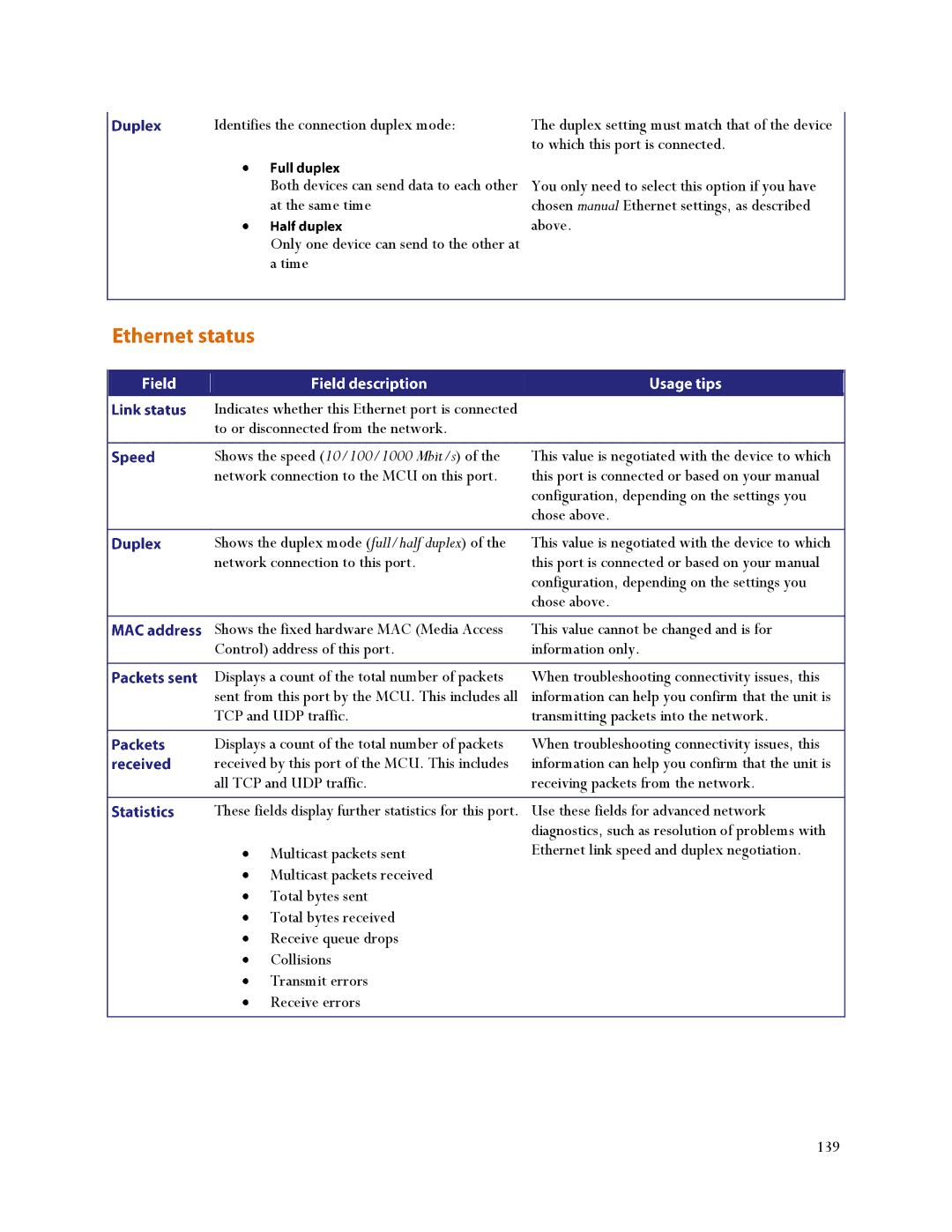
Identifies the connection duplex mode:
Both devices can send data to each other at the same time
Only one device can send to the other at a time
The duplex setting must match that of the device to which this port is connected.
You only need to select this option if you have chosen manual Ethernet settings, as described above.
Indicates whether this Ethernet port is connected to or disconnected from the network.
Shows the speed (10/100/1000 Mbit/s) of the | This value is negotiated with the device to which |
network connection to the MCU on this port. | this port is connected or based on your manual |
| configuration, depending on the settings you |
| chose above. |
|
|
Shows the duplex mode (full/half duplex) of the | This value is negotiated with the device to which |
network connection to this port. | this port is connected or based on your manual |
| configuration, depending on the settings you |
| chose above. |
|
|
Shows the fixed hardware MAC (Media Access | This value cannot be changed and is for |
Control) address of this port. | information only. |
|
|
Displays a count of the total number of packets | When troubleshooting connectivity issues, this |
sent from this port by the MCU. This includes all | information can help you confirm that the unit is |
TCP and UDP traffic. | transmitting packets into the network. |
|
|
Displays a count of the total number of packets | When troubleshooting connectivity issues, this |
received by this port of the MCU. This includes | information can help you confirm that the unit is |
all TCP and UDP traffic. | receiving packets from the network. |
|
|
These fields display further statistics for this port. | Use these fields for advanced network |
| diagnostics, such as resolution of problems with |
Multicast packets sent | Ethernet link speed and duplex negotiation. |
Multicast packets received |
|
Total bytes sent |
|
Total bytes received |
|
Receive queue drops |
|
Collisions |
|
Transmit errors |
|
Receive errors |
|
139
